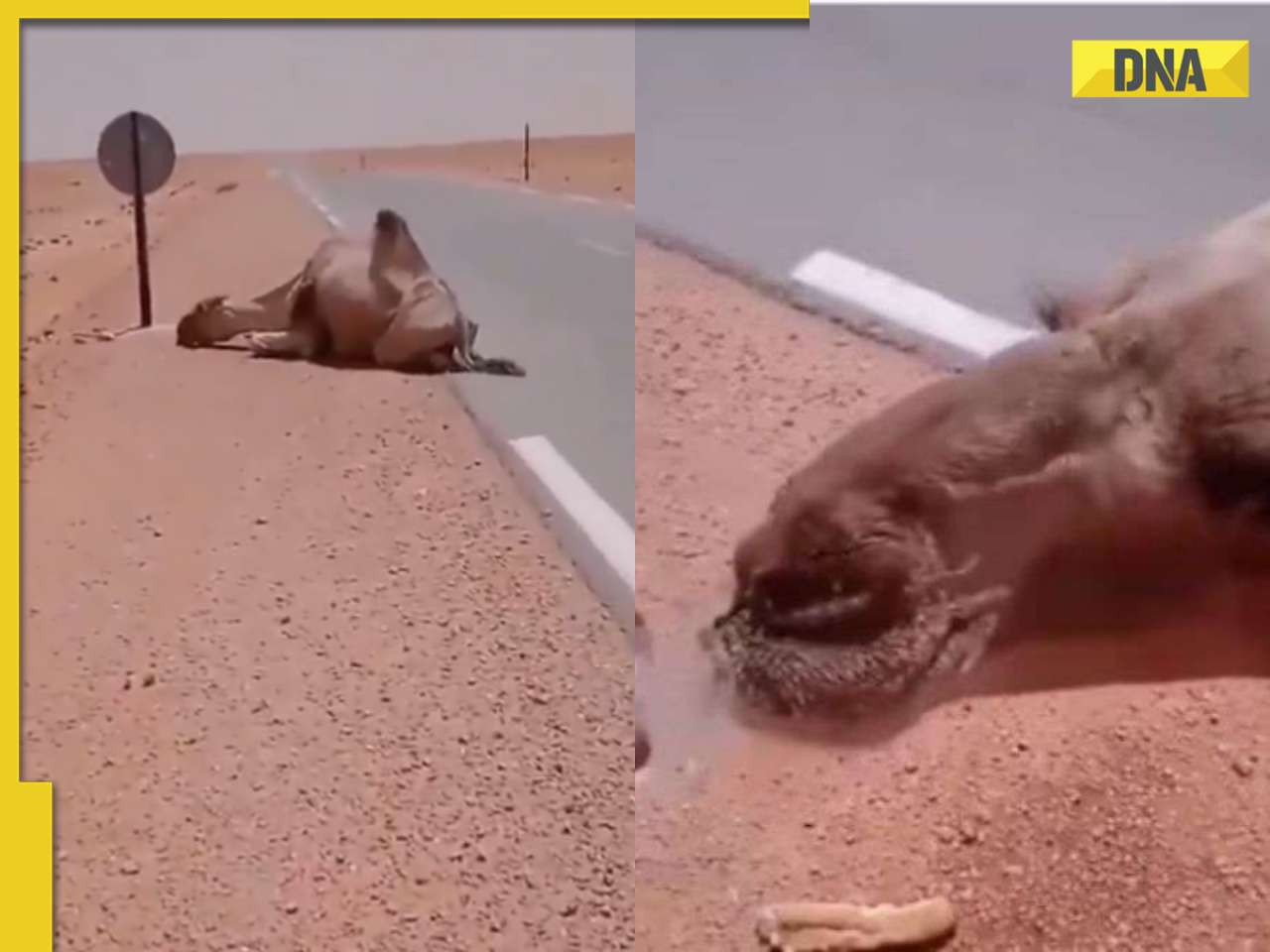The deadly H1N1 virus has flown to India and is spreading fast. Are we ready to tackle the new health hazard? Team DNA finds out
Apart from the usual season-change ailments, health authorities face the much bigger challenge of containing the deadly H1N1 virus this monsoon. Doctors say a warm and moist weather helps spread viral infections and H1N1 could just use the opportunity to play havoc.
“The weather is not favourable but the fact that the infection in India is mild is a relief. So far, the only source of infection has been international travellers, which makes it easy to contain H1N1 spread,” Shashi Khare, in-charge of the monitoring cell of National Institute of Communicable Diseases (NICD), Delhi, said.
Health ministry officials, however, claimed the public health system was well-equipped to handle even a large outbreak. They said the country had enough stock of Oseltamivir (Tamiflu), the drug effective against H1N1.
“Oseltamivir phosphate is the only known treatment for H1N1 influenza. The government has adequate stock of this drug that shall be distributed free through the public health network,” VM Katoch, director, Indian Council of Medical Research, said.
The World Health Organisation (WHO) has designated the outbreak a public health emergency of international concern and has raised the pandemic alert to level 5, implying widespread human transmission.
India has a comprehensive preparedness plan. Since phase 5 requires substantial action from sectors other than health, the National Disaster Management Authority (NDMA) under the home ministry has been asked to step in. NDMA would monitor the progress of the pandemic and the impact of mitigation measures in health and other sectors.
While agreeing that more robust screening was required, health ministry officials claimed the present surveillance at ports, airports and border crossings was satisfactory.
Union health minister Ghulam Nabi Azad said 16 new laboratories were being strengthened to detect not only the circulating H1N1 strains but also new ones.
The government is also preparing a cluster containment strategy in which the identified population in an area will be subjected to active house-to-house surveillance, contact tracing and chemoprophylaxis for healthcare workers at high risk.
The central government appears ready, but can the states also claim preparedness?
A man from Moradabad, Uttar Pradesh, who had gone to Europe on a business trip, made a frantic call to a local hospital on return. Sneezing and coughing, he feared he had contracted H1N1.
Within an hour, the health department headquarters in Lucknow was informed. Director general IS Srivastava rushed a microbiologist, equipped with a protective kit, to take a throat swab. The sample was rushed to NICD, Delhi. Everyone heaved a sigh of relief in the evening. The report was ‘negative’.
“Early detection and speed is important in such cases,” Srivastava said. “We ruled out the case within a matter of hours as we were already on alert.”
And what is the high alert mode? Teams of trained and equipped doctors have been deployed at the two international airports (Lucknow and Varanasi) in UP, and at three points on the Indo-Nepal border to detect infections at entry point. Quarantine rooms have been set up at all these places.
Balrampur Hospital, Lucknow, has a new 12-bed quarantine ward now. There have been no swine flu cases in UP yet.
“The doctors drafted for the job have been given protective kits... we have a good stock of Tamiflu. All district hospitals have been sensitised, and provided with protective kits and isolation facilities,” Srivastava said.
The department has identified 13 districts which record high volume of foreigner movement as “high risk”. The list includes Agra, Mathura, Ghaziabad, Varanasi and Lucknow.
However, even the best of preventive measures cannot be foolproof. “The problem is lack of awareness and this could be dangerous,” said TN Dhole of microbiology department, Sanjay Gandhi PGI, Lucknow.
About 18,589 air passengers and 253 crews have been screened at Netaji Subhash Chandra Bose International Airport in Kolkata and 2,047 crews of 98 ships at Haldia Seaport. None was carrying the virus.
A government official said 20 doctors, three nurses and two health inspectors are running six screening counters round-the-clock at the airport. A 24-hour ambulance service is also in place.
However, an incident on Saturday night brought to light the lacunae. Sutapa Bhattacharya arrived in Kolkata on a flight from Singapore. Despite not showing any swine flu symptoms, she was bundled into an ambulance and sent to Infectious Diseases Hospital, Kolkata, “the nodal hospital for admission of any suspected patient”. The hospital has an isolation ward and lTU beds, Tamilfu and other logistics, but Sutapa was made to lie on a dirty bed in a mosquito-infested room, which was locked till she arrived.
She waited for two hours but no doctor arrived. Exasperated, Sutapa left the hospital. Later, her husband said a local doctor had given Sutapa a clean chit.
Two software engineers, who arrived at Bengaluru International Airport from the US on May 7, were quarantined. Rajiv Gandhi Institute of Chest Diseases (RGICD), Bangalore, one of the 13 hospitals identified by the Karnataka government to treat people with flu symptoms, declared them negative.
RGICD had till Sunday quarantined 21 suspects, 20 Indians and one, Peter, 49, from the Netherlands, but none has tested positive so far.
RGCID director S Buggi said, “We have sent the blood samples to National institute of Virology, Pune, and are awaiting results.”
With around 1,200 international passengers landing at Bangalore airport every day, Karnataka is taking all possible measures to contain H1N1. A 25-doctor team is screening passengers since April 28.
The government has sufficient stock of Tamiflu.
As many as 2,24,122 passengers arriving at the three international airports in Kerala had been screened till Tuesday morning. Though 18 of them were quarantined and their throat swabs examined, none tested positive.
“We have a day-to-day surveillance plan in place. A team of doctors with adequate paramedics has been assigned to each airport,” Anil Kumar, additional director of health services in-charge of public health, said.
The health department has set up special wards in government hospitals in the airport cities of Thiruvananthapuram, Kochi and Kozhikode.
“We have instructed all district medical officers to create awareness on the flu. Even if patients in incubating stage escape scrutiny at airports, they have to be located. We have instructed our staff to report any clustering of flu-like syndromes immediately.
“Community-level screening is also in place,” Kumar said.
The mechanism was tested when a Keralite on board a Chennai-Coimbatore flight was quarantined. The department had located his area of stay when he was declared fine.
What is H1N1?
A new influenza virus detected in the US in April. Spreads person-to-person.
Why was it called “swine flu”?
Initial tests showed that many H1N1 genes were similar to influenza viruses in pigs in North America. But further study shows it is very different.
Is H1N1 contagious?
Yes. However, it is not known how easily it spreads between people.
Symptoms in people?
Fever, cough, sore throat, running or stuffy nose, body aches, headache, chills and fatigue. Diarrhoea, vomiting in some cases.
How does H1N1 spread?
Mainly through coughing or sneezing. Touching something having virus and then touching mouth or nose risky.
How long can a carrier spread virus to others?
People may be contagious from a day before they develop symptoms to 7 days after they get sick. Children might be contagious for longer. Virus itself can infect a person for up to 2-8 hours after depositing on a surface.
Is eating or cooking pork safe?
Yes. H1N1 viruses do not spread by food. Cooked pork products are safe.
And drinking water?
Treated tap water safe. Swimming pool water safe too.
What kills influenza virus?
Heat (75-100°C). Germicides, including chlorine, hydrogen peroxide, detergents, iodophors (iodine-based antiseptics) and alcohols effective if used in proper concentration. Wipes or gels with alcohol can be used to clean hands.
Dos & Don’ts
Avoid crowded places or close contact with sick people. Keep at least an arm’s distance from people with symptoms such as cough, running nose, sneezing and fever
Do not shake hands, hug or kiss socially. Do not spit outdoors. Cover nose and mouth with tissue when coughing or sneezing. Avoid touching eyes, nose or mouth.
Wash hands often, with soap and water, especially after you cough or sneeze.
Stay home for 7 days after symptoms or until you have been symptom-free for 24 hours, whichever is longer
Symptoms
In children: Fast breathing or trouble breathing, bluish or gray skin colour, not drinking enough fluids, severe or persistent vomiting, not interacting, being irritable, not wanting to be held
In adults: Difficulty breathing or shortness of breath, pain or pressure in chest or abdomen, sudden dizziness, severe or persistent vomiting, flu-like symptoms improve but return with fever and worse cough
Medicines: Oseltamivir or zanamivir for treatment and/or prevention of infection. Anti-virals can make your illness milder. They may also prevent serious flu complications.
(With inputs from Vineeta Pandey in Delhi, Ram Raj in Chennai, KV Ramana in Hyderabad, Deepak Gidwani in Lucknow, Madhumita Mookerji in Kolkata, Don Sebastian in Thiruvananthapuram, Nirad Mudur in Bangalore and Sumitra Deb Roy in Mumbai)
![submenu-img]() Mukesh Ambani’s daughter Isha Ambani’s firm launches new brand, Reliance’s Rs 8200000000000 company to…
Mukesh Ambani’s daughter Isha Ambani’s firm launches new brand, Reliance’s Rs 8200000000000 company to…![submenu-img]() Sonali Bendre says producers called her 'too thin', tried to ‘fatten her up' during the 90s: ‘They'd just tell me...'
Sonali Bendre says producers called her 'too thin', tried to ‘fatten her up' during the 90s: ‘They'd just tell me...'![submenu-img]() Heavy rains in UAE again: Dubai flights cancelled, schools and offices shut
Heavy rains in UAE again: Dubai flights cancelled, schools and offices shut![submenu-img]() When 3 Bollywood films with same story released together, two even had same hero, all were hits, one launched star kid
When 3 Bollywood films with same story released together, two even had same hero, all were hits, one launched star kid![submenu-img]() Gautam Adani’s firm gets Rs 33350000000 from five banks, to use money for…
Gautam Adani’s firm gets Rs 33350000000 from five banks, to use money for…![submenu-img]() DNA Verified: Is CAA an anti-Muslim law? Centre terms news report as 'misleading'
DNA Verified: Is CAA an anti-Muslim law? Centre terms news report as 'misleading'![submenu-img]() DNA Verified: Lok Sabha Elections 2024 to be held on April 19? Know truth behind viral message
DNA Verified: Lok Sabha Elections 2024 to be held on April 19? Know truth behind viral message![submenu-img]() DNA Verified: Modi govt giving students free laptops under 'One Student One Laptop' scheme? Know truth here
DNA Verified: Modi govt giving students free laptops under 'One Student One Laptop' scheme? Know truth here![submenu-img]() DNA Verified: Shah Rukh Khan denies reports of his role in release of India's naval officers from Qatar
DNA Verified: Shah Rukh Khan denies reports of his role in release of India's naval officers from Qatar![submenu-img]() DNA Verified: Is govt providing Rs 1.6 lakh benefit to girls under PM Ladli Laxmi Yojana? Know truth
DNA Verified: Is govt providing Rs 1.6 lakh benefit to girls under PM Ladli Laxmi Yojana? Know truth![submenu-img]() Remember Ayesha Kapur? Michelle from Black, here's how actress, nutrition coach, entrepreneur looks after 19 years
Remember Ayesha Kapur? Michelle from Black, here's how actress, nutrition coach, entrepreneur looks after 19 years![submenu-img]() Remember Heyy Babyy's cute 'Angel' Juanna Sanghvi? 20 year-old looks unrecognisable now, fans say 'her comeback will...'
Remember Heyy Babyy's cute 'Angel' Juanna Sanghvi? 20 year-old looks unrecognisable now, fans say 'her comeback will...'![submenu-img]() In pics: Arti Singh stuns in red lehenga as she ties the knot with beau Dipak Chauhan in dreamy wedding
In pics: Arti Singh stuns in red lehenga as she ties the knot with beau Dipak Chauhan in dreamy wedding![submenu-img]() Actors who died due to cosmetic surgeries
Actors who died due to cosmetic surgeries![submenu-img]() See inside pics: Malayalam star Aparna Das' dreamy wedding with Manjummel Boys actor Deepak Parambol
See inside pics: Malayalam star Aparna Das' dreamy wedding with Manjummel Boys actor Deepak Parambol ![submenu-img]() DNA Explainer: Why Harvey Weinstein's rape conviction was overturned, will beleaguered Hollywood mogul get out of jail?
DNA Explainer: Why Harvey Weinstein's rape conviction was overturned, will beleaguered Hollywood mogul get out of jail?![submenu-img]() What is inheritance tax?
What is inheritance tax?![submenu-img]() DNA Explainer: What is cloud seeding which is blamed for wreaking havoc in Dubai?
DNA Explainer: What is cloud seeding which is blamed for wreaking havoc in Dubai?![submenu-img]() DNA Explainer: What is Israel's Arrow-3 defence system used to intercept Iran's missile attack?
DNA Explainer: What is Israel's Arrow-3 defence system used to intercept Iran's missile attack?![submenu-img]() DNA Explainer: How Iranian projectiles failed to breach iron-clad Israeli air defence
DNA Explainer: How Iranian projectiles failed to breach iron-clad Israeli air defence![submenu-img]() Sonali Bendre says producers called her 'too thin', tried to ‘fatten her up' during the 90s: ‘They'd just tell me...'
Sonali Bendre says producers called her 'too thin', tried to ‘fatten her up' during the 90s: ‘They'd just tell me...'![submenu-img]() When 3 Bollywood films with same story released together, two even had same hero, all were hits, one launched star kid
When 3 Bollywood films with same story released together, two even had same hero, all were hits, one launched star kid![submenu-img]() Salman Khan house firing case: Family of deceased accused claims police 'murdered' him, says ‘He was not the kind…’
Salman Khan house firing case: Family of deceased accused claims police 'murdered' him, says ‘He was not the kind…’![submenu-img]() Meet actor banned by entire Bollywood, was sent to jail for years, fought cancer, earned Rs 3000 crore on comeback
Meet actor banned by entire Bollywood, was sent to jail for years, fought cancer, earned Rs 3000 crore on comeback ![submenu-img]() Karan Johar wants to ‘disinherit’ son Yash after his ‘you don’t deserve anything’ remark: ‘Roohi will…’
Karan Johar wants to ‘disinherit’ son Yash after his ‘you don’t deserve anything’ remark: ‘Roohi will…’![submenu-img]() IPL 2024: Bhuvneshwar Kumar's last ball wicket power SRH to 1-run win against RR
IPL 2024: Bhuvneshwar Kumar's last ball wicket power SRH to 1-run win against RR![submenu-img]() BCCI reacts to Rinku Singh’s exclusion from India T20 World Cup 2024 squad, says ‘he has done…’
BCCI reacts to Rinku Singh’s exclusion from India T20 World Cup 2024 squad, says ‘he has done…’![submenu-img]() MI vs KKR, IPL 2024: Predicted playing XI, live streaming details, weather and pitch report
MI vs KKR, IPL 2024: Predicted playing XI, live streaming details, weather and pitch report![submenu-img]() IPL 2024: How can RCB and MI still qualify for playoffs?
IPL 2024: How can RCB and MI still qualify for playoffs?![submenu-img]() MI vs KKR IPL 2024 Dream11 prediction: Fantasy cricket tips for Mumbai Indians vs Kolkata Knight Riders
MI vs KKR IPL 2024 Dream11 prediction: Fantasy cricket tips for Mumbai Indians vs Kolkata Knight Riders ![submenu-img]() '25 virgin girls' are part of Kim Jong un's 'pleasure squad', some for sex, some for dancing, some for...
'25 virgin girls' are part of Kim Jong un's 'pleasure squad', some for sex, some for dancing, some for...![submenu-img]() Man dances with horse carrying groom in viral video, internet loves it
Man dances with horse carrying groom in viral video, internet loves it ![submenu-img]() Viral video: 78-year-old man's heartwarming surprise for wife sparks tears of joy
Viral video: 78-year-old man's heartwarming surprise for wife sparks tears of joy![submenu-img]() Man offers water to thirsty camel in scorching desert, viral video wins hearts
Man offers water to thirsty camel in scorching desert, viral video wins hearts![submenu-img]() Pakistani groom gifts framed picture of former PM Imran Khan to bride, her reaction is now a viral video
Pakistani groom gifts framed picture of former PM Imran Khan to bride, her reaction is now a viral video
















































)
)
)
)
)
)